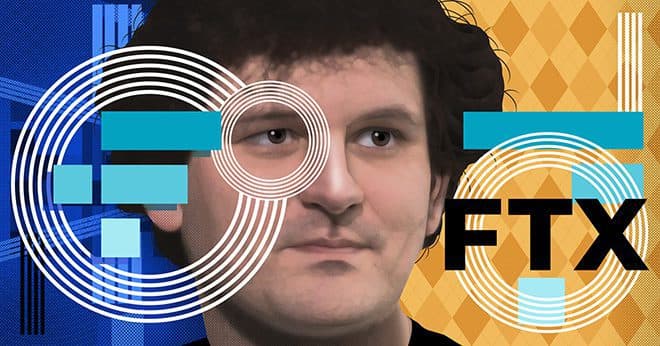Sam Bankman-Fried: Gaming NFTs Have Mainstream Potential
There’s a “decent probability” NFTs could be the driving force to crypto adoption, the FTX boss said.

Sam Bankman-Fried; Blockworks Exclusive Art by Axel Rangel
- Whether it’s integrating NFTs with video games, ticketing for venues or events or teams, Bankman-Fried thinks that the industry is seeing activity that he believes makes “a ton of sense”
- “When you hear about top-tier gaming publisher looking to introduce crypto into their system, I’m pretty bullish on that,” he said
If you asked FTX’s CEO and Founder Sam Bankman-Fried a year ago if he thought that non-fungible tokens (NFTs) would become popular, his answer would have been no. But, now? There’s a “decent probability” that NFTs — particularly gaming NFTs — could be the driving force behind bringing crypto to the mainstream, based on the explosion of the crypto subdivision this past year, he said during a panel at the Bloomberg Financial Innovation Summit on Friday.
“I don’t want to confidently say that will happen because I think (mainstream adoption) could be through payment rails instead,” Bankman-Fried noted. “There’s a few things that it could be. But I would put NFTs in that top category probability wise, along with a couple other things in terms of what brings a non-crypto native audience to crypto for something other than financial investing,” he added.
Whether it’s integrating NFTs with video games, ticketing for venues, events or teams, Bankman-Fried thinks the industry activity makes “a ton of sense” as a product. Additionally, it can serve as a pretty clean innovation layer to add on top of the existing structures, he said.
But there’s going to be a big difference between crypto companies trying to make a game and gaming companies trying to introduce crypto into their games, he said.
“I think, frankly, it’s really hard to make a really engaging video game. I don’t think I can do it. It would take a really long time to build up that expertise,” he said.
“So when you hear about top-tier gaming publisher looking to introduce crypto into their system, I’m pretty bullish on that.”
Creating a liquid marketplace
Integrating markets into games could add greater engagement and that’s not exclusive to crypto, but is available all over the gaming space right now, Bankman-Fried said. Examples of this include these massively multiplayer online role playing games (MMO RPGs), like Eve Online or World of Warcraft, he said.
“Many games already have economies built into them, but they’re extremely illiquid because there’s just a random video game trying to make an economy out of nothing,” he said. “But if you get access to an integrated financial system, that even people who aren’t playing the game could get access to outside the game as well, that could create a much more liquid marketplace,” he added.
Play-to-earn projects, like Axie Infinity, have gained traction in the recent months and is an example of a liquid gaming marketplace. Founded in 2018, Axie Infinity is a play-to-earn (P2E) game where users can earn crypto rewards that can later be sold on exchanges, Blockworks previously reported. Players can trade, battle, and breed NFT creatures called Axies — through a Pokémon-style investment opportunity.
Creating a liquid marketplace is one way crypto companies can work with traditional gaming businesses, Bankman-Fried said. NFTs elements like gaming skins or galleries that can be displayed both in the game or on other social media platforms can bring out users’ representation of who they are online and is another piece to the equation that has potential to bring crypto to the mainstream, he added.
Ethereum-based video game ranks fifth among the top five video game organizations globally by market capitalization, data from Messari and TradingView shows. The monthly volume on Axie has increased from $8 million in April to all-time highs of over $1 billion in August, according to Axie data. In the last 24 hours, the total volume for Axie was $41.64 million, or about 9,200 ether.
“One thing I’m really excited about is you take a top-tier gaming studio, that’s making a great game and wants to have market mechanics in it and wants to have real user-ownership of the digital assets in it and wants to use blockchain technology, payment rails and NFTs to enable that,” Bankman-Fried said. “That’s where I would guess you’re going to see the biggest adoption early on,” he added.
Earlier today, FTX, Lightspeed Venture Partners and Solana Ventures also announced their investment to create a $100 million Web3 gaming initiative, the companies said on Friday. The investment will focus on gaming studios, technology and projects that focus on the overlap between blockchains and gaming.
Although Bankman-Fried said he doesn’t have an exact timeline for this to happen, he believes it will be implemented and every major gaming studio is looking into doing something tech-wise there.
“It’s not going to happen tomorrow, it’s going to be slow, trickle at the beginning. But I think all of them have decided they’re going to take the plunge somehow, someway,” he added.






